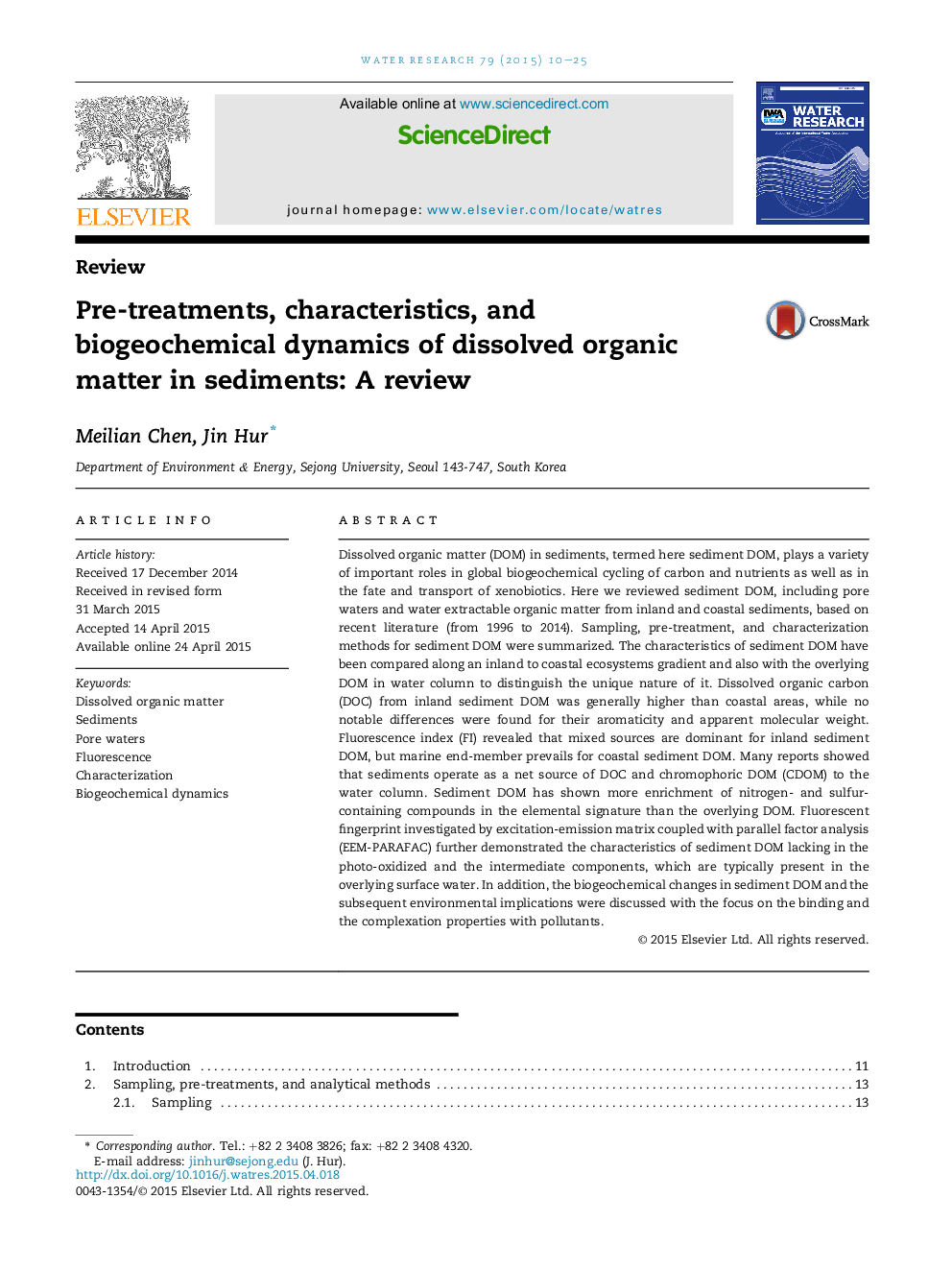| Article ID | Journal | Published Year | Pages | File Type |
|---|---|---|---|---|
| 4481146 | Water Research | 2015 | 16 Pages |
•Sediments operate as a net source of DOC and CDOM to water column.•Sediment DOM shows more aromatic and more reduced characteristics than overlying DOM.•DOC from inland sediment DOM is generally higher than coastal areas.•Mixed sources are dominant for inland sediment DOM but not for coastal sediment DOM.
Dissolved organic matter (DOM) in sediments, termed here sediment DOM, plays a variety of important roles in global biogeochemical cycling of carbon and nutrients as well as in the fate and transport of xenobiotics. Here we reviewed sediment DOM, including pore waters and water extractable organic matter from inland and coastal sediments, based on recent literature (from 1996 to 2014). Sampling, pre-treatment, and characterization methods for sediment DOM were summarized. The characteristics of sediment DOM have been compared along an inland to coastal ecosystems gradient and also with the overlying DOM in water column to distinguish the unique nature of it. Dissolved organic carbon (DOC) from inland sediment DOM was generally higher than coastal areas, while no notable differences were found for their aromaticity and apparent molecular weight. Fluorescence index (FI) revealed that mixed sources are dominant for inland sediment DOM, but marine end-member prevails for coastal sediment DOM. Many reports showed that sediments operate as a net source of DOC and chromophoric DOM (CDOM) to the water column. Sediment DOM has shown more enrichment of nitrogen- and sulfur-containing compounds in the elemental signature than the overlying DOM. Fluorescent fingerprint investigated by excitation-emission matrix coupled with parallel factor analysis (EEM-PARAFAC) further demonstrated the characteristics of sediment DOM lacking in the photo-oxidized and the intermediate components, which are typically present in the overlying surface water. In addition, the biogeochemical changes in sediment DOM and the subsequent environmental implications were discussed with the focus on the binding and the complexation properties with pollutants.
